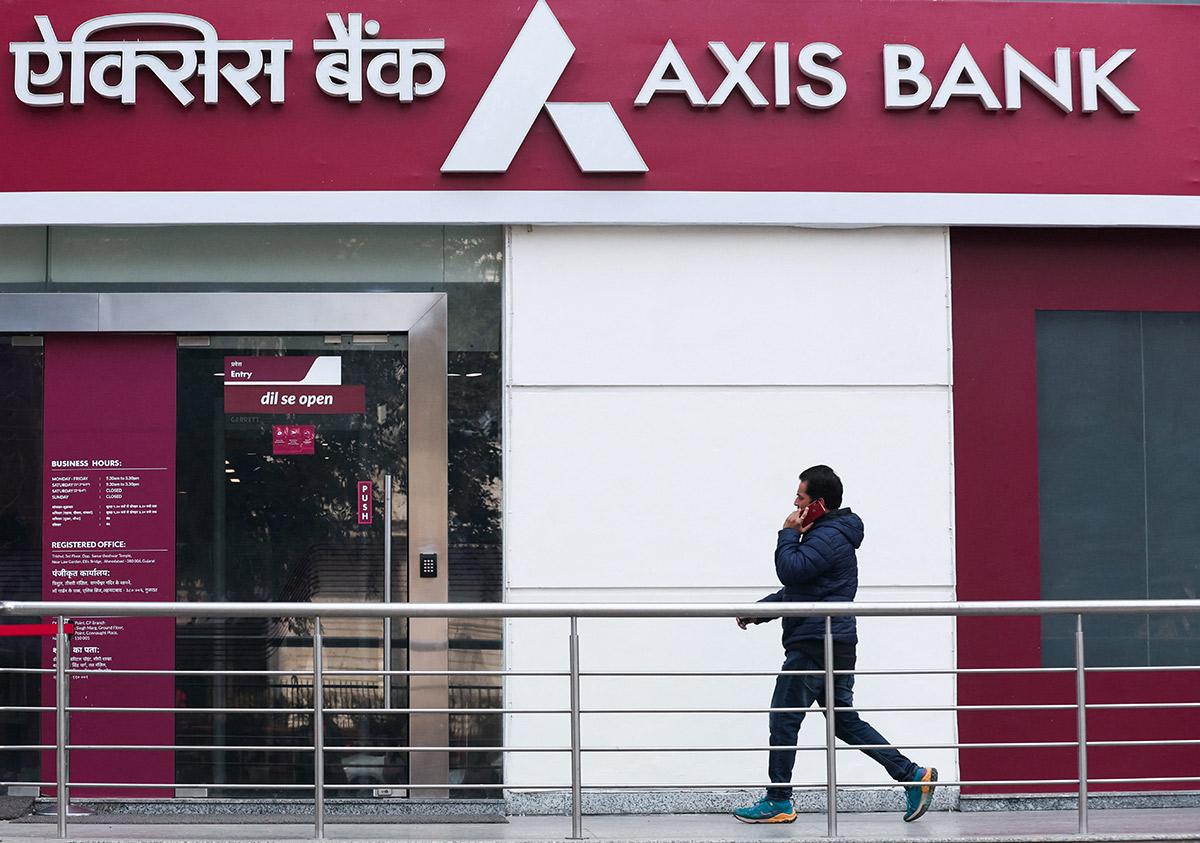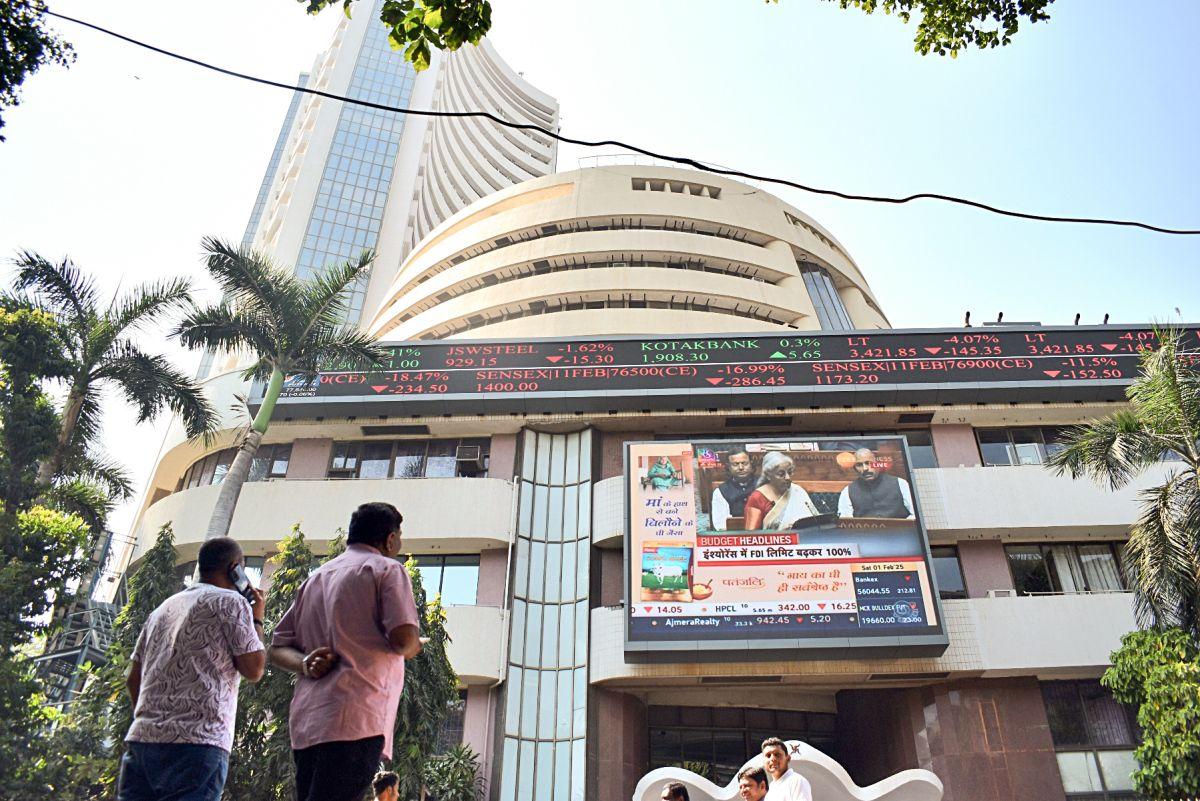In Q1FY26, the bank reported fresh slippages of ₹8,200 crore, up 71 per cent Y-o-Y and sequentially. Of this, ₹7,500 crore is from the retail segment.

Photograph: Anushree Fadnavis/Reuters
Axis Bank, India’s third-largest private-sector lender, on Thursday reported a 4 per cent year-on-year (Y-o-Y) decline in net profit to ₹5,806 crore for the first quarter of 2025-26 (Q1FY26). The decline was attributed to a significant rise in slippages during the quarter, which led to higher loan loss provisions.
The higher slippages and consequently higher provisions were driven by changes made by the bank in its asset-classification and income-recognition policies.
“Prudent application of technical parameters for recognising slippages, and consequent upgrades impacted reported asset quality parameters, including provisions and contingencies for Q1FY26. Technical impact is largely restricted to cash credit and overdraft products, and one-time settled accounts,” the bank said in a statement, adding that “technical impact” has adversely impacted the bank’s net profit by ₹614 crore, return on assets (ROA) by 15 basis points (bps), and return on equity (ROE) by 1.4 per cent.
Additionally, the bank said, 80 per cent of individual contracts that slipped because of “technical impact” and that continue to remain non-performing assets (NPAs) as on June 30, 2025, are fully secured. “Hence, we believe that economic loss due to “technical impact” will be minimal over the life of such contracts,” the bank clarified.
In Q1FY26, the bank reported fresh slippages of ₹8,200 crore, up 71 per cent Y-o-Y and sequentially. Of this, ₹7,500 crore is from the retail segment. As a result, the bank’s loan loss provisions shot up to ₹3,900 crore, up 2.85 times sequentially, and 1.52 times on a Y-o-Y basis. The bank’s provisions and contingencies in Q1FY26 stood at ₹3,948 crore, compared to ₹1,359 crore in Q4FY25, and ₹2,039 crore in Q1FY25.
Additionally, the bank clarified that ₹821 crore of provisions and contingencies debited to the profit & loss account is attributable to “technical impact”. Adjusting the “technical impact”, the bank’s provisions and contingencies would have been ₹3,127 crore.
Further, the bank said, of the ₹8,200 crore of fresh slippages in Q1, ₹2,709 crore was attributable to “technical impact”. Gross slippages for the quarter adjusted for “technical impact” is ₹5,491 crore.
Owing to higher slippages, the bank’s asset quality took a hit, with gross NPAs at 1.57 per cent at the end of Q1FY26, up 29 bps over last quarter. Net NPAs were also up at 0.45 per cent.
“For NPA classification, we have not changed days past due (DPD) parameters because they are driven by regulation. We benchmark the qualitative parameters to be the most prudent in the market on an annual basis. It happens for us in the period of February-March and the implementation happens from the next fiscal. The purpose of the benchmark is to make sure that our balance sheet is resilient and can withstand any credit cycle. This is the thinking behind the change”, said Puneet Sharma, chief financial officer, Axis Bank, explaining the rationale behind the exercise.
“As indicated in last quarter, we have made changes to our technical recognition criteria that have impacted Q1 asset quality numbers across gross slippages, net slippages, credit cost, and interest reversals impacting NIMs. Because the stock of our book is so large, the overall impact in this quarter is large. We believe the economic impact over a period of time will be minimal,” said Amitabh Chaudhry, MD & CEO, Axis Bank.
Meanwhile, the private sector lender reported a 1 per cent Y-o-Y increase in net interest income (NII) at ₹13,560 crore while other income was up 25 per cent Y-o-Y at ₹7,258 crore. According to the bank, gross NPA ratio adjusted for “technical impact” stood at 1.41 per cent while adjusted net NPA stood at 0.36 per cent.
The bank’s net interest margin (NIM) — a measure of profitability of banks — stood at 3.8 per cent, down 17 bps from last quarter, and 25 bps from the corresponding period of last year.
Its growth in advances for the quarter was muted at 8 per cent Y-o-Y, and 2 per cent sequentially to ₹10.59 trillion, with retail loans growing 6 per cent Y-o-Y to ₹6.22 trillion; small business banking (SBB) growing 15 per cent Y-o-Y; loan against property growing 21 per cent Y-o-Y; personal loans growing 5 per cent Y-o-Y; credit card advances growing 2 per cent Y-o-Y; and rural loan portfolio growing 5 per cent Y-o-Y.
Additionally, the small and medium enterprise (SME) book of the bank grew 16 per cent Y-o-Y while the corporate loan book grew 9 per cent Y-o-Y. Domestic corporate book grew 11 per cent Y-o-Y while mid-corporate book grew 24 per cent Y-o-Y.
“Our platforms will allow us to grow faster than the industry growth, subject to how the market plays out. This line brings out our intent and confidence on growth,” said Chaudhry, adding that the fact that some of the retail assets have not grown gives us the confidence that we can grow because there is that much opportunity to grow.
During the same period, the deposit book of the bank grew 9 per cent Y-o-Y to ₹11.61 trillion, of which current account deposits grew 9 per cent, saving account deposits grew 3 per cent, and term deposits grew 12 per cent Y-o-Y. The share of current account and savings account (CASA) deposits in total deposits stood at 40 per cent at the end of Q1FY26.




